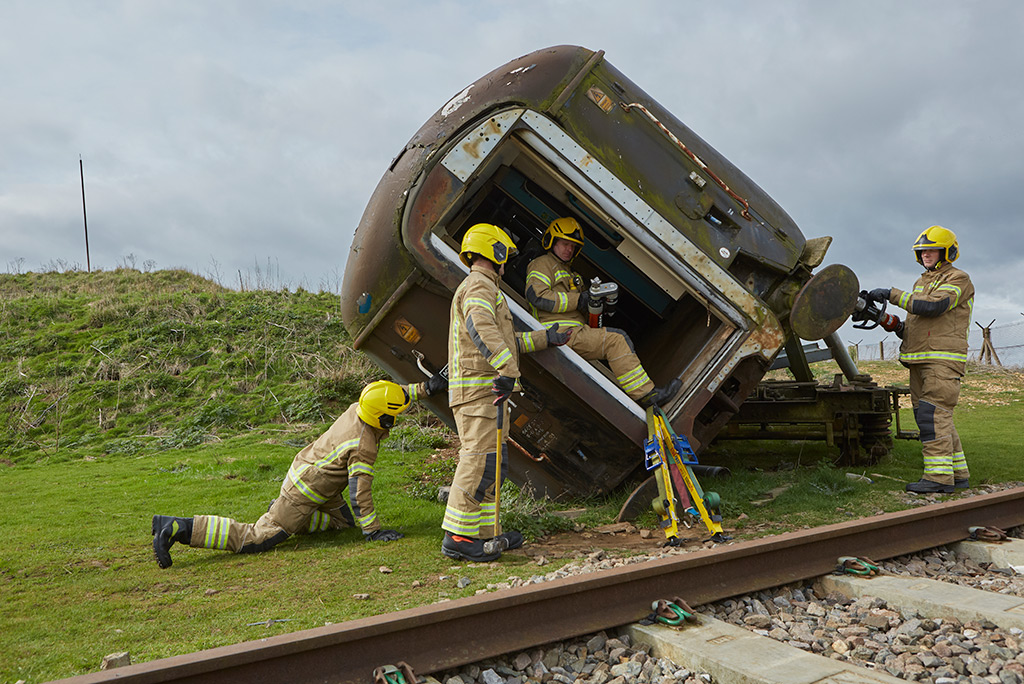Tom Hainsworth APF Magazine December 2013
There are some major themes emerging which will drive the personal protective equipment (PPE) market over the next few years on an international level.
One of the biggest ones is the growing consensus around the world that there needs to be greater interoperability not just between different fire services but also between the Blue Light Services as a whole.
Clearly, the potential for cost savings is at the heart of this debate, but it is not just a matter of cost. Other drivers include the benefit of greater collaboration and improved efficiencies in the way that our emergency services respond to the challenges of the modern world.
The report “Facing the Future”, written by Sir Ken Knight, a former chief fire officer in the UK, made the call for greater interoperability and working towards a unified Fire and Rescue Service in England when it was published earlier this year.
A month before Sir Ken’s report hit the desks of Government Ministers, the eight regional fire services in Scotland had taken the giant leap of joining forces in one single organisation.
For other countries around the world, the idea of greater collaboration between Blue Light services is increasingly well established, although not always welcome at first. For example, firefighters at more than 300 firehouses in New York now routinely provide the first medical response, while greater integration is now second nature in Canada, France and countries in other parts of the world.
Every aspect of how fire services go about their job is coming under scrutiny from the types of incidents they now respond to, through to the vehicles they turn up in and whether emergency services can not only train more closely together, but also be housed more efficiently, with the resulting savings to be made from merging various back office functions.
All of this has significant implications for the PPE market globally and it is essential that industry leaders such as Hainsworth are able to meet the changing demands of our emergency crews.
With the increasing moves towards interoperability, so companies such as Hainsworth have to take into account the overall emergency response capability rather than looking more narrowly at the specific needs of fire, police and ambulance as was previously the case.
While greater collaboration will take time to come about, it is important that we are looking ahead to how today’s emergency services will look in ten to 15 years’ time.
That is why leading fabric producers, garment manufacturers and other specialists involved in the PPE industry are also forming part of the collaboration process to ensure that they are fully aligned with the thinking of senior fire, ambulance and police personnel.
The job of the firefighter is becoming more targeted which means that the kit of today and tomorrow needs to meet a range of specific needs.
A number of fire services are now looking at moving more towards layered firefighting personal protective equipment.
The move towards layered kit is an acknowledgement that the traditional structural fire kit used at road traffic collisions, car fires or flooding, is too bulky, heavy and thermally inefficient.
The kit remains essential when tackling a burning building, but the workload of the modern firefighter is these days more diverse than ever.
Layering is about understanding this diversity and analysing the precise intervention requirements with the firefighter given the flexibility to be able to layer up according to the level of risk involved.
An incredible amount of attention to detail goes into the creation of today’s PPE from the choice of fabric, design of the garment and the innovation and technology that can be harnessed.
Hainsworth has been involved in the manufacture of firefighting garments for more than a century.
We have come a long way since the first woollen jackets worn by our fire services in the late 1800s which provided excellent shielding but were notoriously heavy and exhausting for the wearer.
But we also have a responsibility to continue to push boundaries and to explore new ways of doing things. We do this in a number of ways including the work of our own fully accredited laboratory whose work centres on textile innovation, while representatives of Hainsworth are proud to sit on a number of the standards committees around the world, another good example of the importance of collaboration.
Collaboration really is essential because a complete understanding is not held by any individual fire service or member of the supply chain.
For example, a firefighter needs to have an understanding of dynamic risk assessment so he can make the right call, the garment manufacturer needs to understand fit, comfort and the relationship between that and protection, while a fabric innovator, such as Hainsworth, needs to have an appreciation of all of these requirements as well as an in-depth understanding of how different fibres react in different environments.
There will undoubtedly be many changes over the next decade both in the way firefighters go about their work, the kind of incidents they are called out to and the kit they are given to do the job.
But the end goal will remain the same, namely to ensure that the garments worn by our fire and other emergency services in all the different scenarios they face offer the best possible protection.
